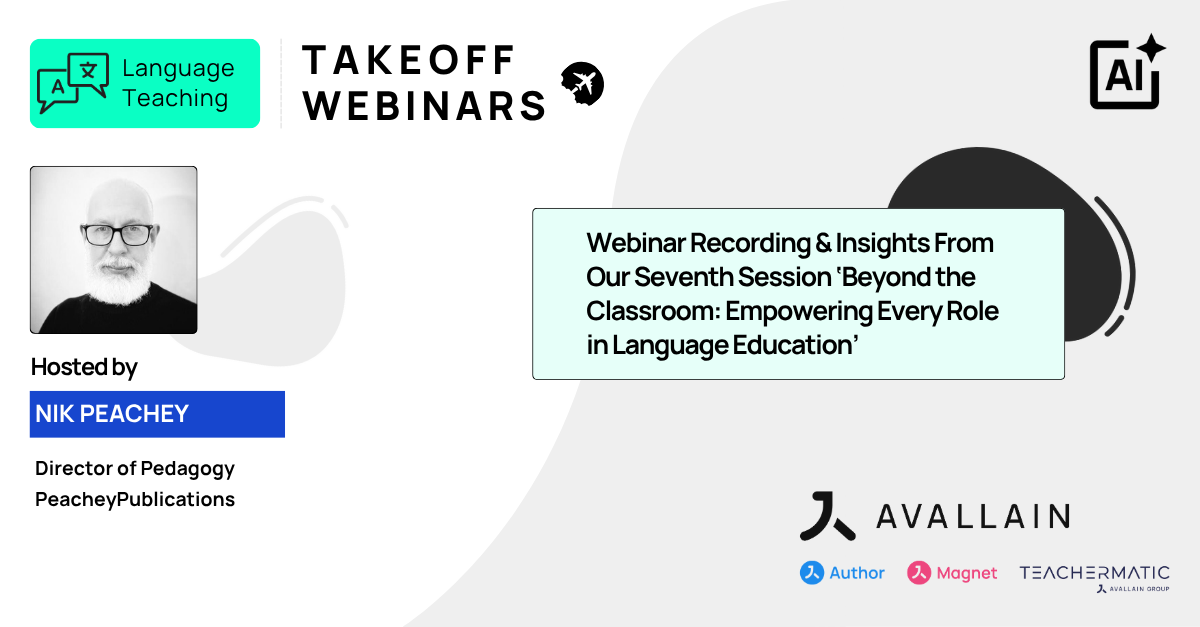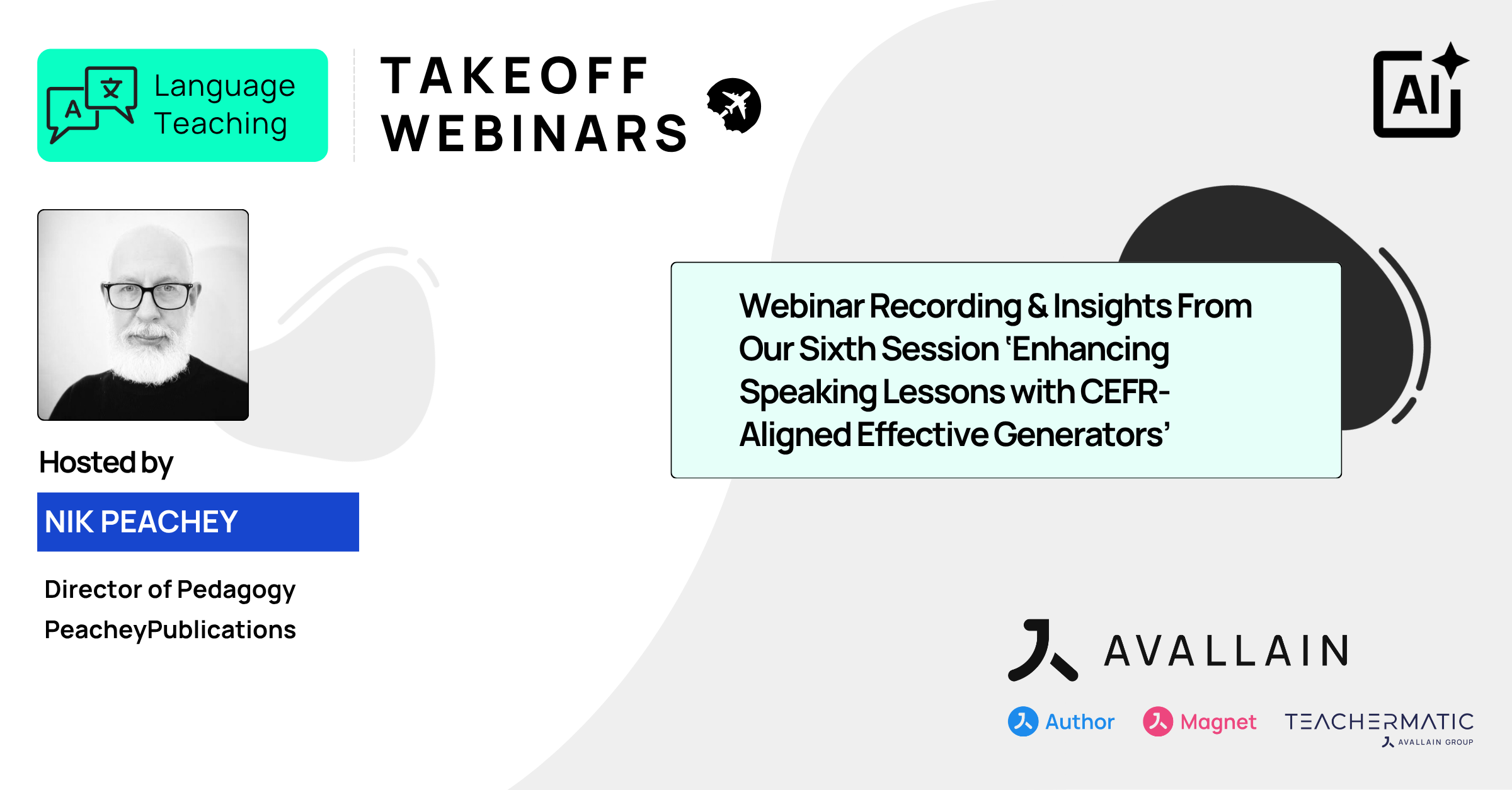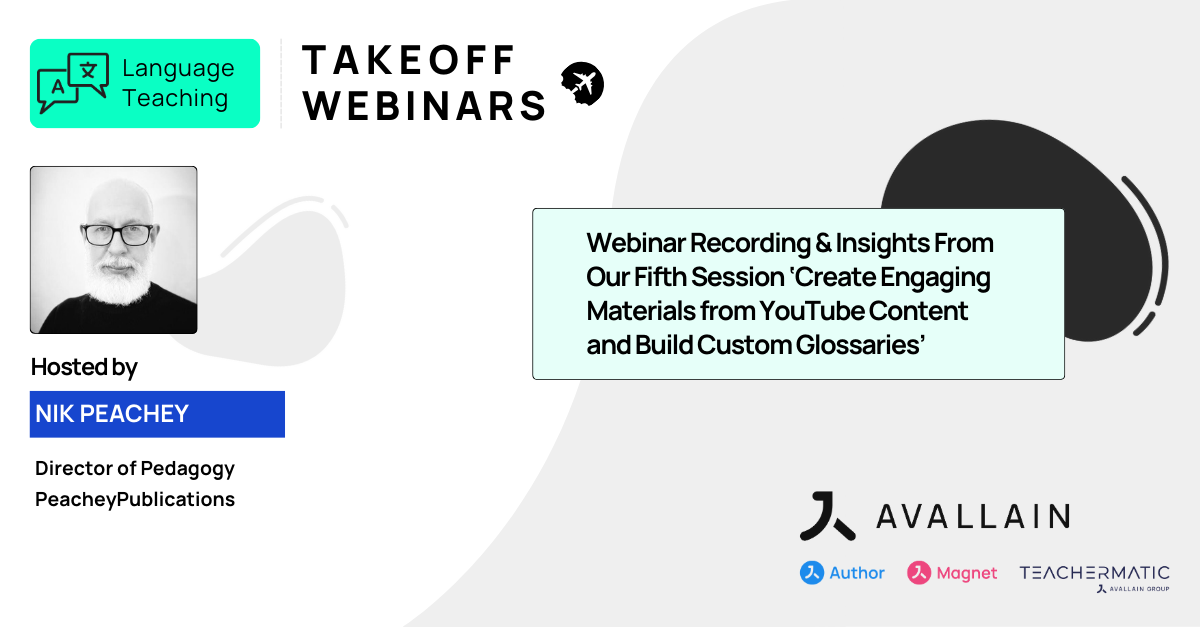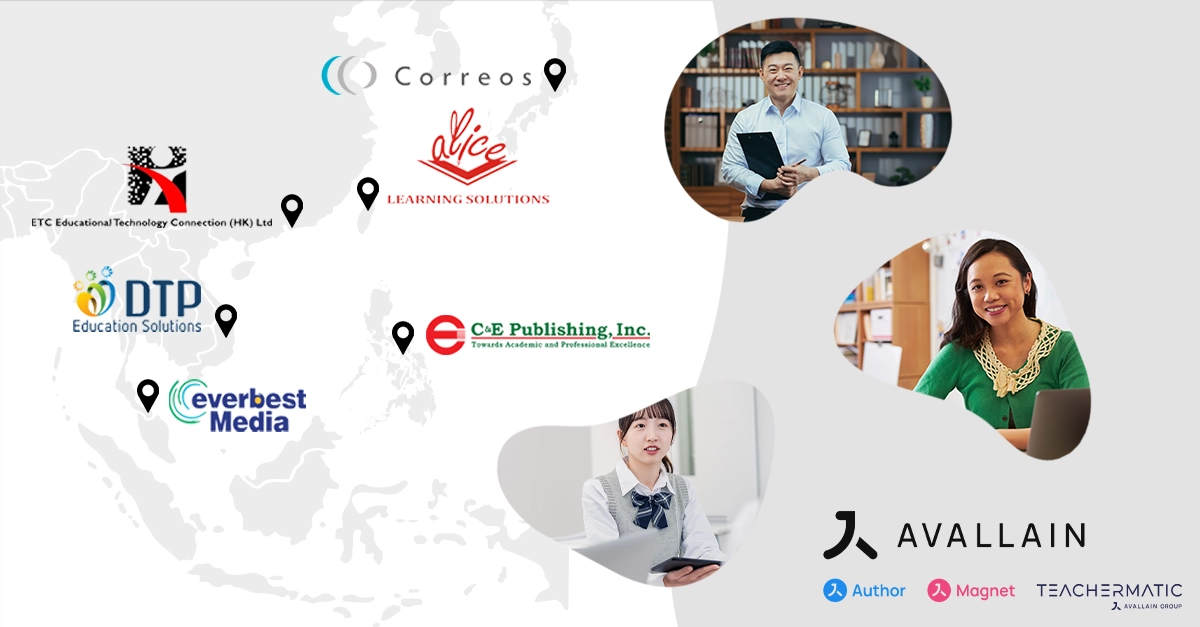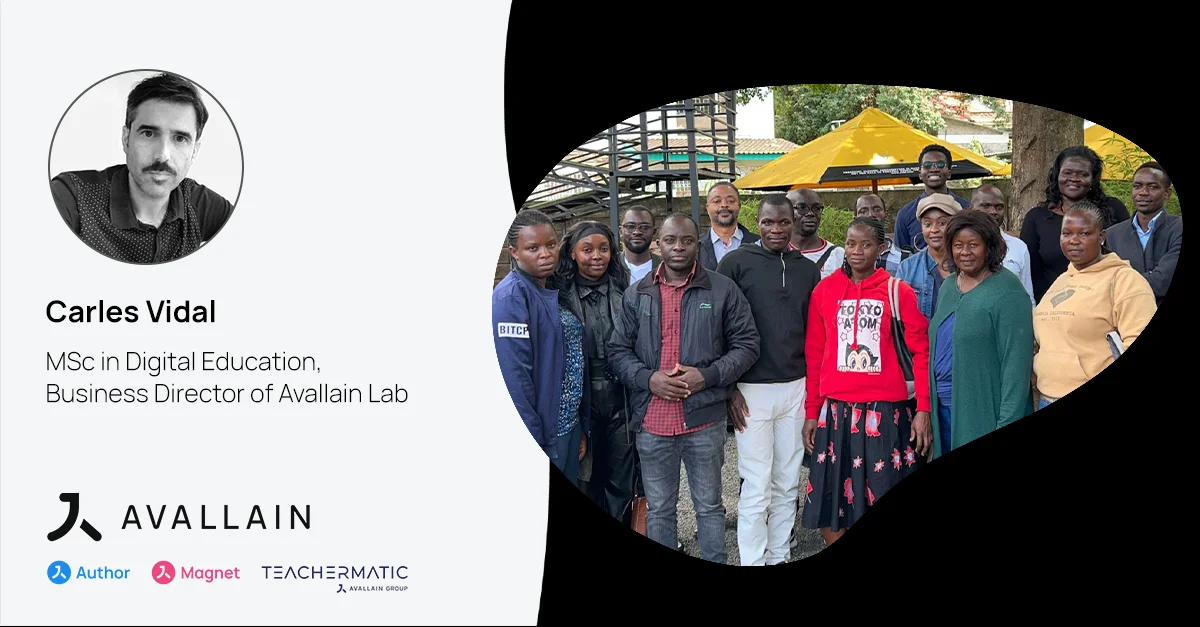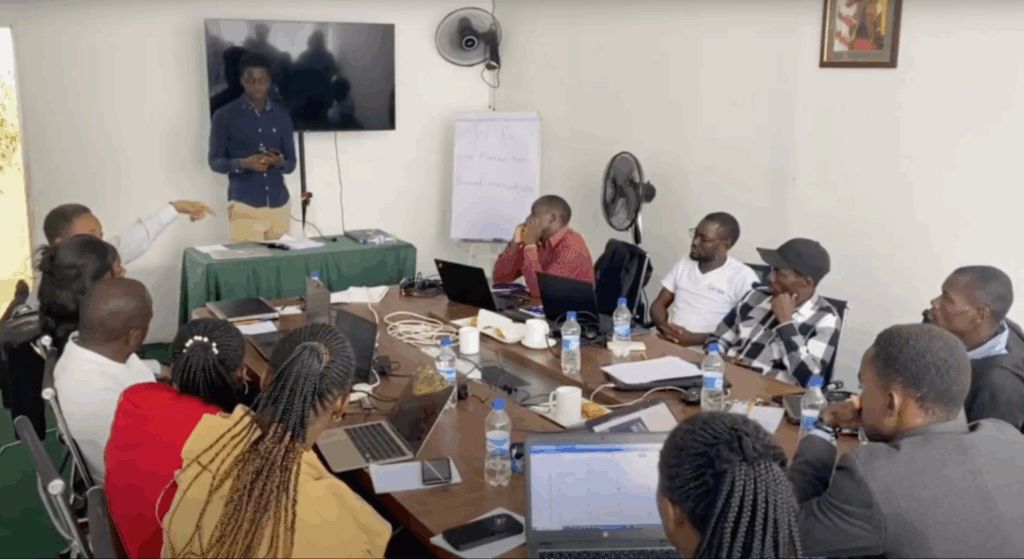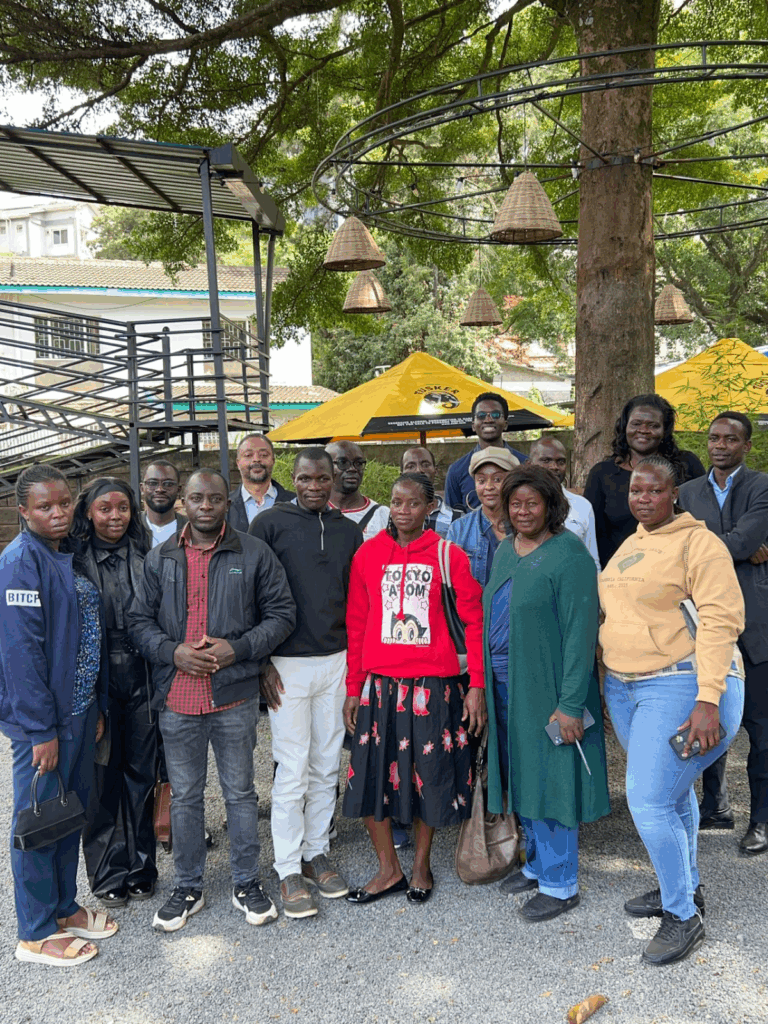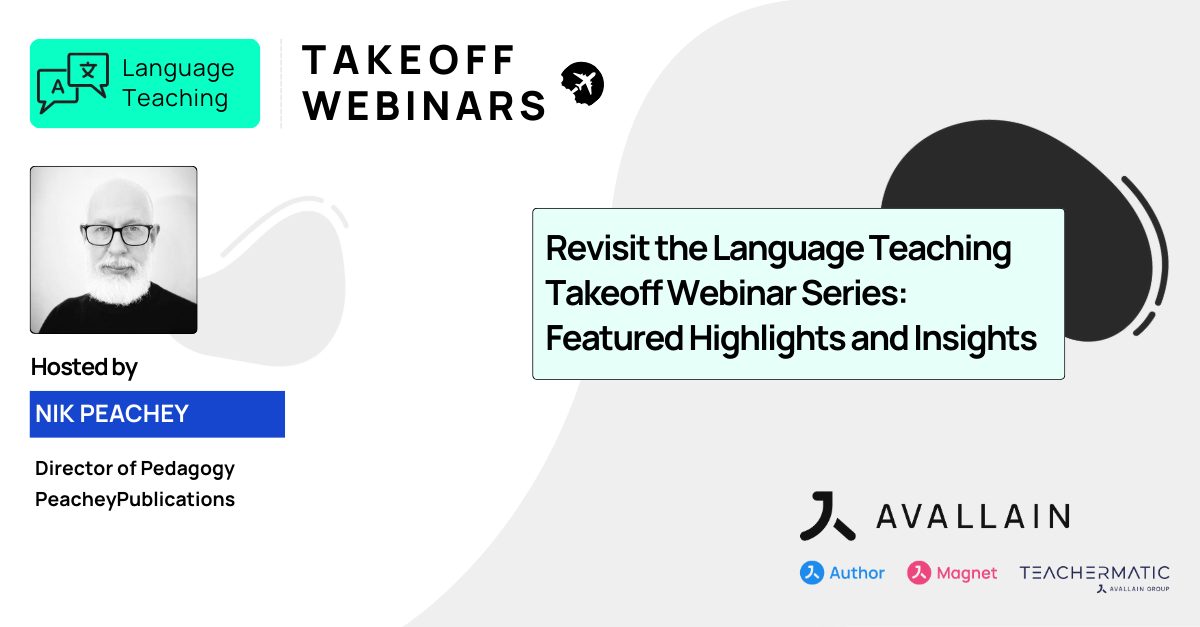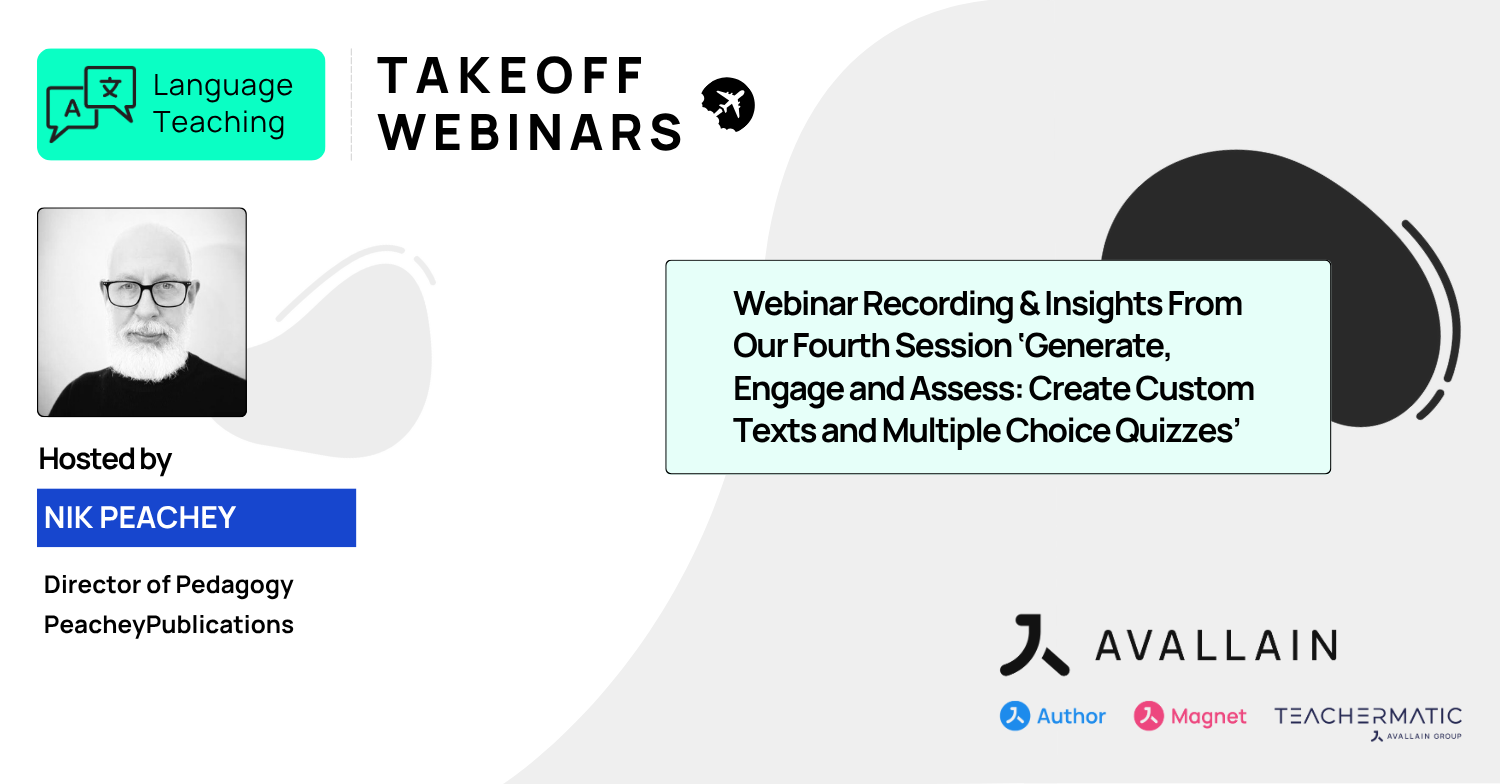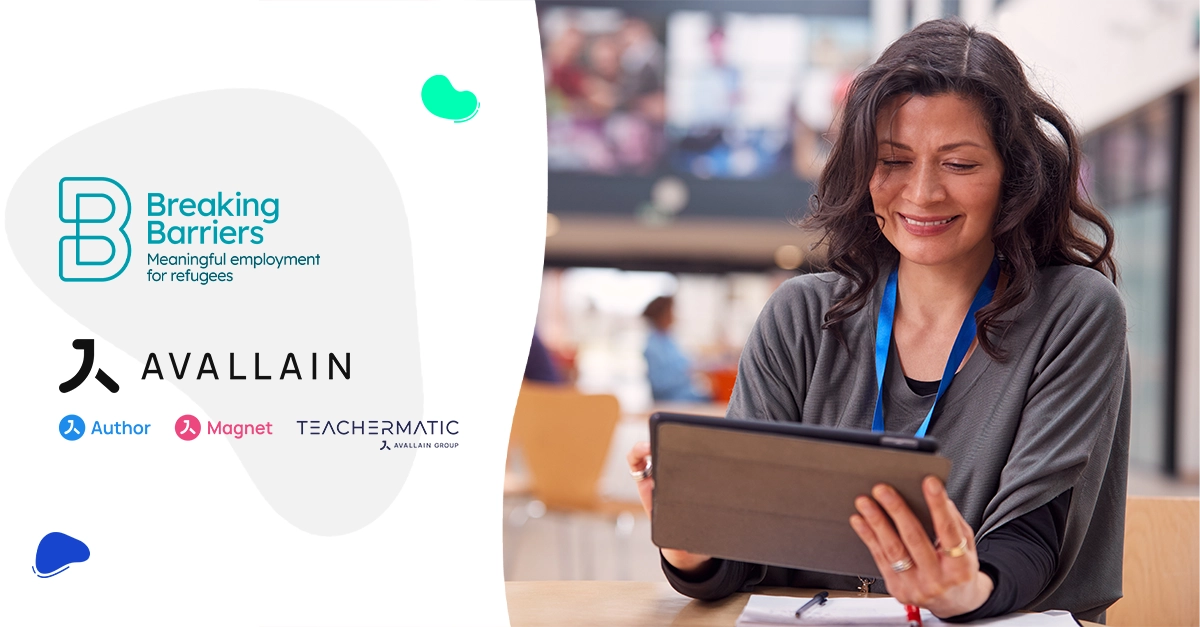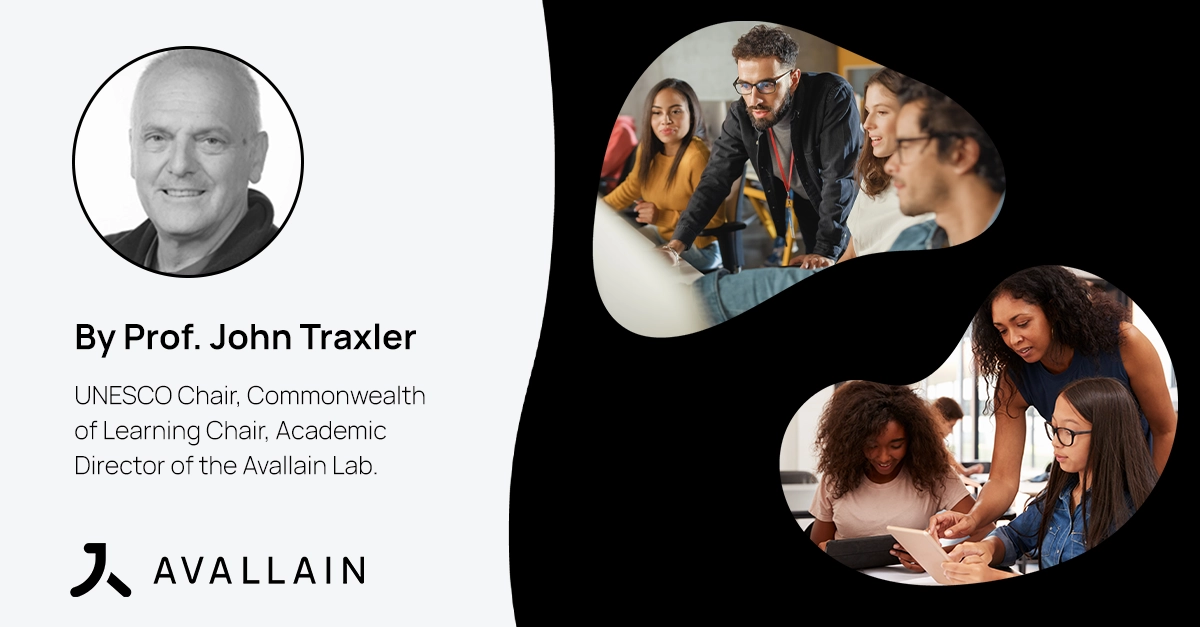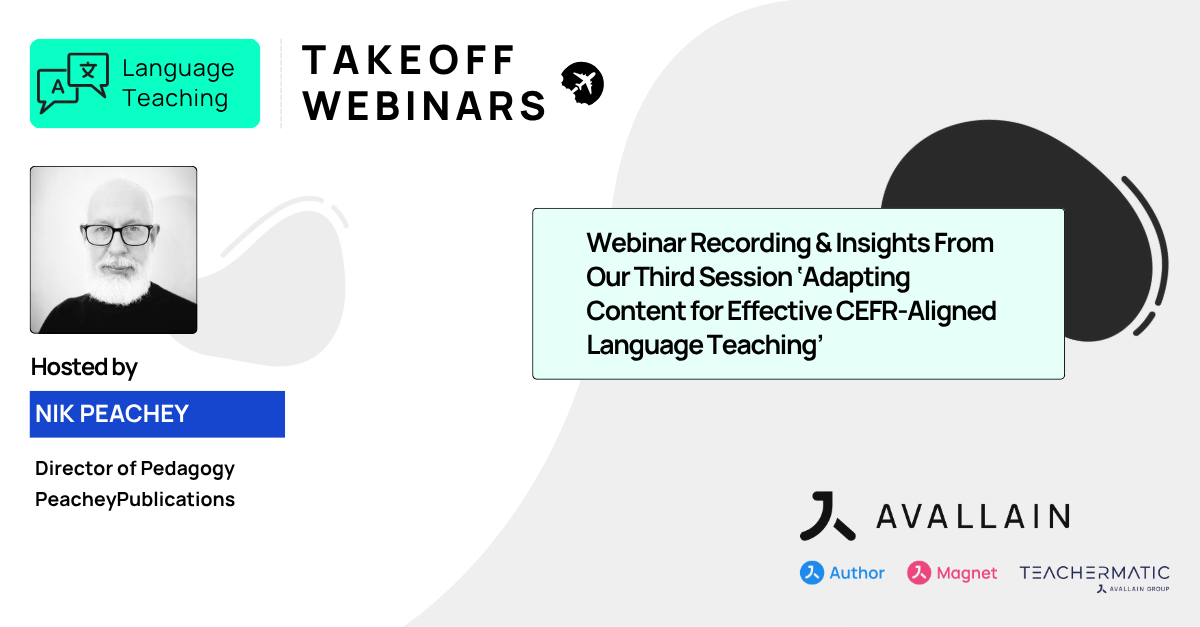The seventh instalment of the Language Teaching Takeoff Webinar Series explored how the TeacherMatic Language Teaching Edition supports not only teachers but also school leaders, administrators and other institutional roles.
Driving Institutional Excellence in Language Education with AI
London, November 2025 – In ‘Beyond the Classroom: Empowering Every Role in Language Education’, award-winning educator, author and edtech consultant, Nik Peachey demonstrated four AI generators specifically designed to streamline planning, policy-making, analysis and strategy, while enabling users to exercise ethical oversight and agency.
Moderated by Giada Brisotto, Senior Marketing and Sales Operations Manager at Avallain, the session illustrated how TeacherMatic extends beyond classroom resource creation to supporting institutional efficiency and decision-making at all levels.
Safe AI Tools for Institutional Efficiency
Practical AI Generators to Support Leaders and Administrators
Automate and Simplify Planning
Create Tailored, Practical Strategies
The Draft Strategy generator is particularly useful for institutional leaders responsible for implementing new initiatives. It supports the creation of tailored, actionable strategies. Users provide key context such as their role, type of institution and strategic objectives, and the generator produces a structured draft that highlights goals and steps. Leaders can expand sections to address specific institutional priorities, providing a practical framework to guide decisions and coordinate teams effectively. By shaping outputs from user input, the generator empowers leaders to plan confidently and act strategically.
Structured Policy Creation for Confident Decisions
Drafting a policy statement can be daunting, especially when it’s unclear where to begin. The Draft a Policy Statement generator provides leaders with a structured starting point and guides them through the process with suggested inputs. Users can enter their institution type and add optional guidance or reference documents that the policy must align with, creating a draft that reflects the specific context and requirements of their organisation. While the generator delivers a strong, customised foundation that simplifies the initial stages of policy creation, Nik reminds users that maintaining oversight is essential to ensure compliance and alignment with guidelines.
Easily Uncover Patterns and Insights
While it may appear simple at first glance, the Insight Generator can be immensely valuable. A leader or administrator can upload a dataset and receive a summary analysis along with suggested questions, making it easier to uncover patterns and insights. Nik highlighted how this tool can help create student personas, track engagement trends or identify retention issues, giving leaders a clearer picture of learner performance and institutional dynamics. By translating raw data into valuable insights, the generator enables leaders to focus on strategic decisions and targeted interventions rather than manual data analysis.
Additional Resources to Support Strategic Leadership
In addition to these four generators, Nik highlighted several other tools that support leaders and administrators across an institution. For example, the SMART targets generator empowers leaders to set clear, measurable objectives, while the Improvement Plan generator guides structured staff development planning. The Self Assessment Advisor facilitates reflection on personal performance and identifies areas for growth. Together, these AI generators and additional tools extend beyond classroom-focused tasks to strategic and proactive leadership, enabling teams and institutions to achieve greater impact.
Bridging Classroom and Institutional Excellence
Excellence in language education relies on equipping leaders, managers and teachers with the right support. The TeacherMatic Language Teaching Edition offers pedagogically aligned AI tools that make it easier to develop customised plans, policies, analyses, strategies and more, ensuring clarity and cohesion across the institution.
Aligned with Avallain’s commitment to responsible, human-centred technology, TeacherMatic encourages ethical application and frees users to focus on facilitation and implementation, strengthening both classroom and institutional practice.
Explore the TeacherMatic Language Teaching Edition
The TeacherMatic Language Teaching Edition provides sector-specific, CEFR-aligned AI generators that support both classroom and institutional practice. Teachers, leaders and administrators can use the platform to create tailored lessons, structured documentation, analyses and more, all designed to meet the unique needs of their learners and institutions.
Next in the Webinar Series
Transforming Language Teaching with Ethical AI: A Panel Discussion
🗓 Thursday, 11th December
🕛 12:00 – 13:00 GMT | 13:00 – 14:00 CET
In this special episode of the Language Teaching Takeoff Webinar Series, join an expert panel as they explore how ethical AI is transforming language education. Pilar Capaul, Nik Peachey, Joanna Szoke and Ian Johnstone will share practical insights and real classroom examples, demonstrating how tools like the TeacherMatic Language Teaching Edition empower teachers to save time, foster creativity, retain the human touch and integrate AI responsibly, offering guidance for both classroom practice and institutional leadership.
About Avallain
For more than two decades, Avallain has enabled publishers, institutions and educators to create and deliver world-class digital education products and programmes. Our award-winning solutions include Avallain Author, an AI-powered authoring tool, Avallain Magnet, a peerless LMS with integrated AI, and TeacherMatic, a ready-to-use AI toolkit created for and refined by educators.
Our technology meets the highest standards with accessibility and human-centred design at its core. Through Avallain Intelligence, our framework for the responsible use of AI in education, we empower our clients to unlock AI’s full potential, applied ethically and safely. Avallain is ISO/IEC 27001:2022 and SOC 2 Type 2 certified and a participant in the United Nations Global Compact.
_
Contact:
Daniel Seuling
VP Client Relations & Marketing
